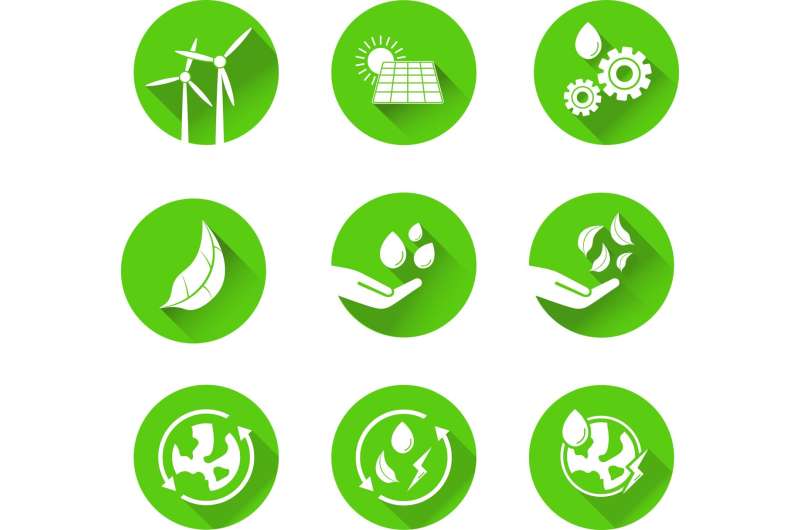This article has been reviewed according to Science X's editorial process and policies. Editors have highlighted the following attributes while ensuring the content's credibility:
fact-checked
peer-reviewed publication
trusted source
proofread
Immediate uptick in investment needed to reach net zero

Both the European Union and Switzerland have set themselves the goal of becoming climate neutral by 2050 and of reducing their greenhouse gas emissions to net zero. To achieve this target, major investments in power generation from renewable energies, electricity grids, storage capacities and other climate-relevant infrastructure are required. However, it has been unclear until now just how much investment will be necessary over the next 15 years and which areas are the most important.
This gap in knowledge has now been filled by a meta-study conducted by ETH professor Bjarne Steffen and Lena Klaaßen, which was recently published in Nature Climate Change. The authors conclude that reaching the net-zero target will be jeopardized if an annual 302 billion euros fail to flow into climate-relevant infrastructure in Europe over the next two years.
A third more investment needed
"Investment in green infrastructure needs to urgently increase by 87 billion euros per year compared with the levels of recent years. This is an increase of more than one third," explains first author Klaaßen, who is a doctoral student at ETH Zurich's Climate Finance and Policy Group. Although the money is readily available—given the size of the European equity and bond markets—the main challenge is to put the necessary political policies in place quickly enough to ensure that capital flows into the right projects.
The ETH researchers built on 56 relevant technology and investment studies from academia, industry and the public sector. They focused on the countries of the EU, but also took into account data on the U.K., Norway and Switzerland. The overall European trends are therefore also relevant for Switzerland.
Three areas are particularly important
The most dramatic increase in the need for investment is in power generation from renewable energies. "In order to drive forward the decarbonization of all areas of life, around 75 billion euros needs to be invested in solar and wind power plants in the coming years. This is 24 billion euros more per year than in the recent past," adds Steffen.
The situation is similar in the expansion of distribution networks and the railway. In these areas, too, 40% to 60% additional financial flows are required compared to the 2016–2020 period in order to expand electrification and to shift traffic from road to rail.
Ukraine war reinforcing trends
According to the authors, the war in Ukraine is reinforcing these trends further: "In order to import as little gas as possible from Russia, Europe would have to invest around 10 billion euros more per year in solar energy and wind power. In comparison, significantly less investment—around 1.5 billion euros per year—is needed in additional natural gas infrastructure such as LNG terminals," says Steffen.
According to the ETH study, fossil fuels such as coal, oil and gas are likely to tie up less capital in future in Europe. The investment required in conventional power plants in particular is set to fall by 70% within the space of a few years.
Tailoring regulation to different sectors
What can policymakers do to expedite the increase in capital made available for the expansion of green infrastructure? "Political measures should be tailored to funding in those sectors where there is the greatest need for investment," explains Klaaßen. This is not a matter of course today, she says. For example, existing regulations in the EU focus on identifying sustainable securities, despite the fact that important climate-relevant infrastructure is not at all financed via the equity markets.
The expansion of renewable energies, in contrast, is often made possible by private investors such as pension funds and banks. The public sector should minimize their risk through revenue guarantees and by making approval procedures as quick and predictable as possible. Public investment in new technologies such as CO2 storage can also help to encourage private investors to venture into these areas.
More information: Lena Klaaßen et al, Meta-analysis on necessary investment shifts to reach net zero pathways in Europe, Nature Climate Change (2023). DOI: 10.1038/s41558-022-01549-5
Journal information: Nature Climate Change
Provided by ETH Zurich




















